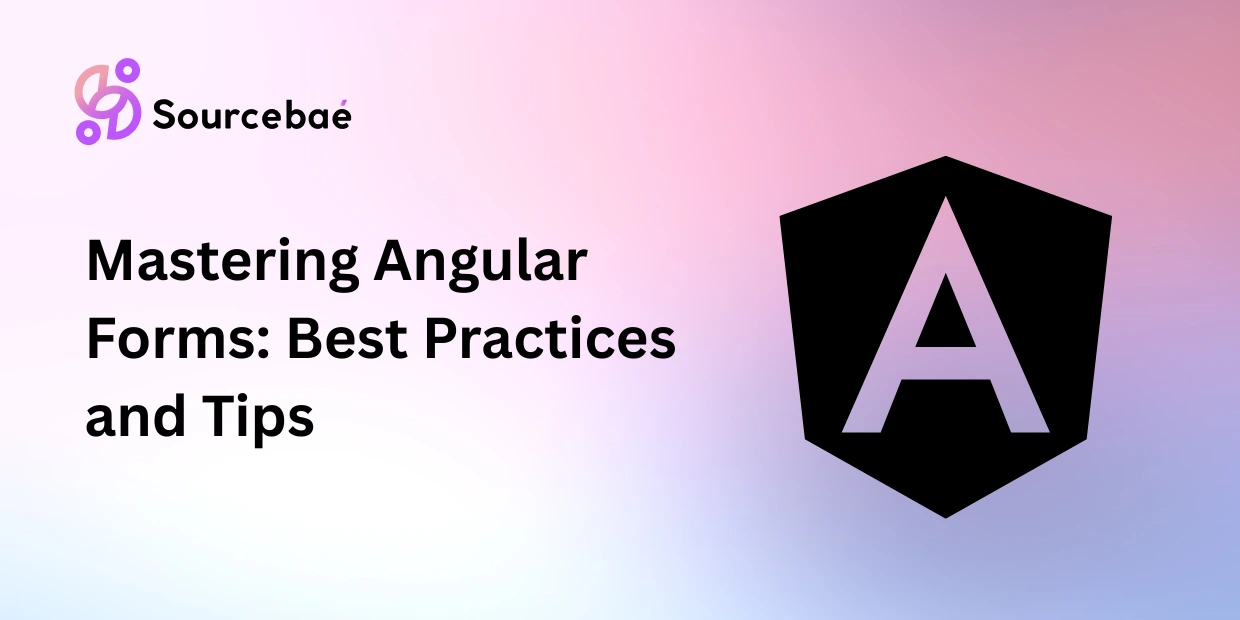Angular is a popular JavaScript framework that allows developers to build dynamic and interactive web applications. One of the fundamental aspects of web development is handling forms, which play a crucial role in user interactions. Mastering Angular forms is essential for creating robust and user-friendly applications. In this article, we will explore the best practices and tips to enhance your Angular form development skills and create efficient, secure, and engaging forms.
Mastering Angular Forms: Best Practices and Tips
Understanding Angular Forms
Angular provides two types of forms: Template-driven forms and Reactive forms. Template-driven forms are simpler and rely on directives in the template to build and validate the form. Reactive forms, on the other hand, are more flexible and allow you to manage form control programmatically. Understanding the differences between these two forms is essential for choosing the right approach for your project.
Setting Up Angular Forms
Before diving into form development, you need to set up Angular and create the necessary modules and components. Follow these steps to get started:
- Install Node.js and Angular CLI if you haven’t already.
- Create a new Angular project using the Angular CLI.
- Generate components for your forms and set up routing if needed.
LSI Keywords and Their Importance
LSI (Latent Semantic Indexing) keywords are related terms that search engines use to understand the context of your content. By incorporating LSI keywords into your headings and content, you can improve your search engine rankings and reach a broader audience. Let’s explore some LSI keywords relevant to Angular forms:
- Angular form validation
- Angular reactive forms
- Angular form controls
- Angular form builder
- Angular form submission
- Angular form events
Creating Template-Driven Forms
Template-driven forms are quick to implement, making them suitable for simple use cases. Follow these steps to create a template-driven form:
- Use the
ngFormdirective to create a form element. - Add form controls using
ngModeldirective with two-way data binding. - Implement form validation using Angular’s built-in validators.
- Customize error messages for better user experience.
- Handle form submission using the
(ngSubmit)event.
Building Reactive Forms
Reactive forms offer more control and flexibility, making them ideal for complex forms. Follow these steps to build reactive forms:
- Create a form group using
FormBuilderand add form controls with validators. - Implement custom validators for advanced form validation.
- Use form control events to respond to user interactions.
- Disable form submit until the form is valid.
- Dynamically update form controls based on user input.
Handling Form Validation
Proper form validation is crucial for ensuring data accuracy and preventing security vulnerabilities. Angular provides various validators to enforce validation rules. Some essential validation practices include:
- Required field validation for mandatory inputs.
- Pattern validation for enforcing specific input formats.
- Min and Max validation for numeric fields.
- Custom validation for complex business logic.
Securing Forms Against Attacks
Web forms are vulnerable to security attacks like XSS (Cross-Site Scripting) and CSRF (Cross-Site Request Forgery). To secure your Angular forms, consider the following measures:
- Implement server-side validation and sanitization.
- Use Angular’s built-in mechanisms to prevent XSS attacks.
- Add CSRF tokens to protect against CSRF attacks.
Enhancing User Experience
Creating a smooth and intuitive user experience is vital for increasing user engagement. Here are some tips to enhance your Angular forms’ user experience:
- Use client-side validation for instant feedback.
- Add tooltips and hints for form fields.
- Implement real-time form validation as users type.
- Use animations for a visually appealing experience.
Optimizing Form Performance
Optimizing form performance is essential, especially for large-scale applications. Follow these tips to ensure optimal form performance:
- Use lazy loading to load forms when needed.
- Limit the number of form fields to reduce rendering time.
- Minimize the use of watchers for better performance.
Testing Angular Forms
Thorough testing is essential to ensure the reliability and correctness of your forms. Angular provides robust testing tools that help you test both template-driven and reactive forms. Write unit tests and end-to-end tests to cover all form functionalities.
Integrating Third-Party Libraries
Angular offers various third-party libraries that can enhance your form development process. Some popular ones include:
- ng-select: A customizable select box component.
- ngx-mask: A library for input masking and formatting.
- ngx-translate: A tool for multi-language support.
Common Mistakes to Avoid
While mastering Angular forms, developers often make some common mistakes. Here are some pitfalls to avoid:
- Overcomplicating forms when a simpler approach suffices.
- Neglecting form accessibility for users with disabilities.
- Ignoring browser compatibility issues.
Frequently Asked Questions (FAQs)
Q: What is the difference between template-driven forms and reactive forms?
A: Template-driven forms rely on directives in the template, while reactive forms allow programmatic control over form elements.
Q: How can I validate user input in Angular forms?
A: You can use Angular’s built-in validators or create custom validators to validate user input.
Q: Is it necessary to implement security measures in Angular forms?
A: Yes, implementing security measures like input validation and CSRF protection is crucial to prevent attacks.
Q: What are some best practices for optimizing form performance?
A: Use lazy loading, limit the number of form fields, and minimize the use of watchers.
Q: Can I integrate third-party libraries to enhance form functionalities?
A: Yes, Angular supports the integration of third-party libraries like ng-select and ngx-mask.
Q: How can I ensure the accessibility of Angular forms?
A: Use proper semantic elements and provide alternative text for form elements to enhance accessibility.
Conclusion
Mastering Angular forms is an essential skill for every web developer. By following best practices and implementing tips from this article, you can create efficient, secure, and user-friendly forms for your Angular applications. Remember to optimize form performance, test thoroughly, and prioritize security to deliver a seamless user experience.






